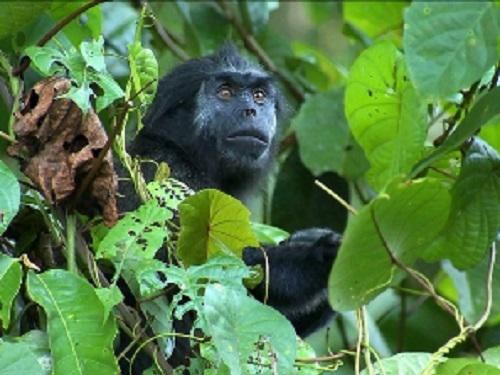Marcel Quinten
Other projects
2 Feb 2010
Population and Habitat Viability Analysis for the Pig-Tailed Langur (Simias concolor) in the Mentawai Archipelago, W. Sumatra, Indonesia
By carrying out a series of systematic primate surveys in the area, this project aims to provide the first reliable estimates of density and abundance of the Simias concolor population within Siberut National Park.

Simias concolor.
Simias concolor or Simakobu, endemic to the 7000 km² Mentawai Archipelago W-Sumatra, Indonesia), is classified as critically endangered in the IUCN Red List of Threatened Species and currently considered as one of the world’s 25 most endangered primates. Habitat loss due to logging and land conversion for agriculture, as well as excessive local hunting pressure pose the main threats to the species´ survival. Despite the conservation significance of the Simakobu however, relatively little is known about its habitat requirements, local distribution, population size and trends, demography, or the species’ adaptability to anthropogenic disturbance. Furthermore, no management and conservation plan for the Simakobu exists.
In an effort to contribute to the species’ long-term survival, the present study aims to investigate key aspects of the population biology and ecology of Simias concolor and to generate a biological database needed for the implementation of effective conservation measures. Its main objectives are to determine the current status of the Simakobu population on Siberut, the archipelago’s largest island (~ 4000 km²), and to identify the main factors affecting the species’ population size and distribution. Specifically, this will involve a land-cover analysis of Siberut Island in order to generate an up-to-date and reliable classification of the remaining primate habitat in the region based on satellite remote sensing data ( phase 1), as well as a comprehensive series of surveys to determine the population size and density of the Simakobu on Siberut Island. These data will be compared with previous information (literature) to identify recent population trends ( phase 2). Furthermore, the species’ sensitivity to anthropogenic disturbance will be examined, in particular with regard to habitat destruction and hunting, and quantitative analyses will be conducted to provide an estimate of species population viability ( phase 3). The resulting data will help to generate specific conservation recommendations for the Mentawai region.
This second RSG grant towards the overall Simias concolor population viability project specifically supports project phase 2, thus enabling a series of surveys to be conducted within the boundaries of Siberut National Park. Despite its status as a National Park, no systematic survey of this kind has been carried out in the area before, hence this project will provide the first reliable estimates of density and abundance of Simias concolor (and forest primates) within the park.